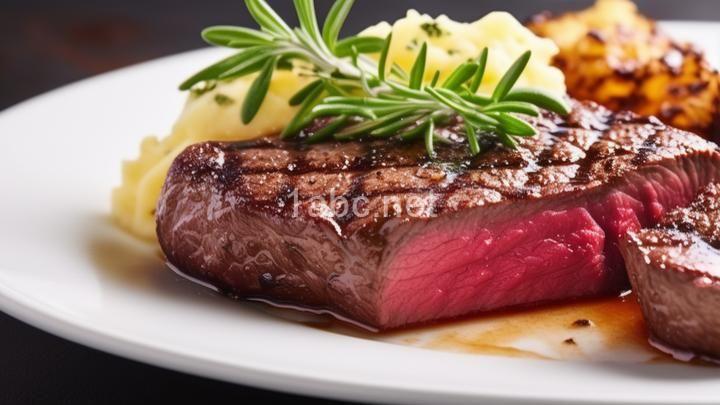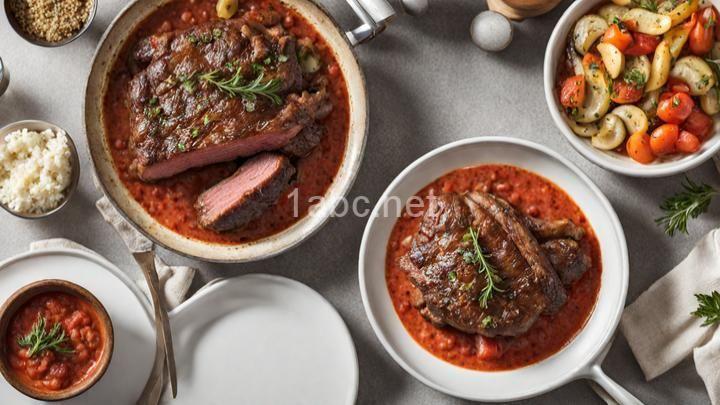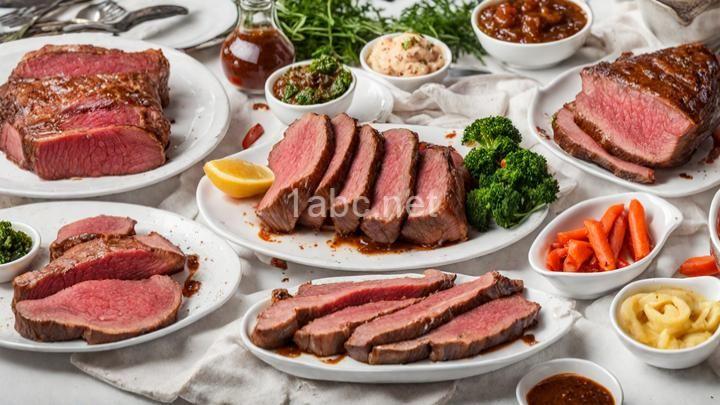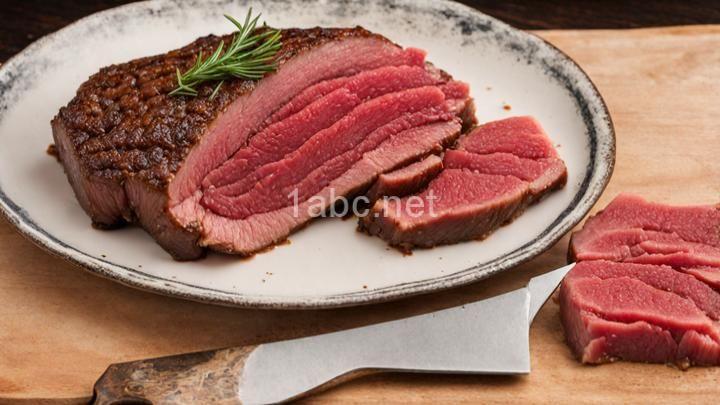Tender and Juicy: Expert Tips on Cooking Beef to Perfection
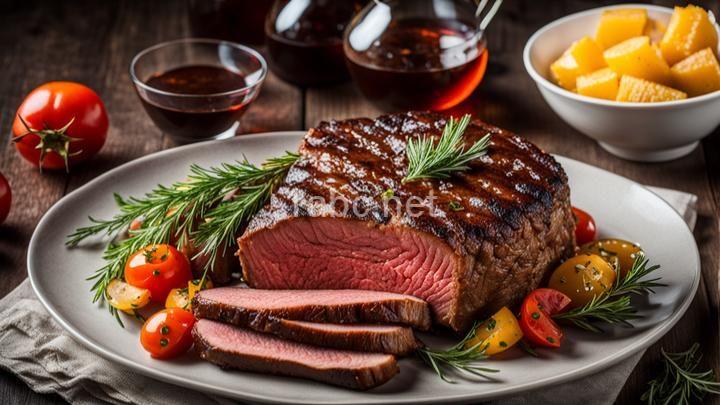
Introduction:
Hello and a warm welcome to all the beef lovers out there! If you're someone who craves a perfectly cooked, tender, and juicy piece of beef, then you've come to the right place. In this blog post, we will share some expert tips and techniques that will help you elevate your beef cooking game to new heights. Whether you're a beginner or an experienced cook, these tips will surely take your beef dishes to the next level. So, let's dive right in!
Section 1: Choosing the Right Cut
When it comes to cooking beef, choosing the right cut is the first and most crucial step. Different cuts of beef have distinct characteristics that make them suitable for various cooking methods. For example, a tenderloin is incredibly tender and requires less cooking time, while a chuck roast is perfect for slow cooking to achieve that fall-apart tenderness.
When selecting beef, it's essential to prioritize quality and freshness. Look for beef that is bright red, with a firm texture and minimal visible fat. Opting for grass-fed beef can also enhance the flavor and tenderness.
Section 2: Preparing the Meat
Properly preparing the meat before cooking is essential to ensure the best possible results. Start by trimming any excess fat from the meat, as excessive fat can lead to flare-ups and uneven cooking. However, a thin layer of fat can help add flavor and retain moisture during cooking.
Marinating the meat is another fantastic way to enhance the flavor and tenderness. Choose a marinade that complements the natural flavors of the beef, and let it marinate for at least 30 minutes to a few hours, depending on the cut and desired intensity of flavor. Don't forget to bring the meat to room temperature before cooking, as this allows for more even cooking throughout the cut.
Section 3: Cooking Techniques
Now that your beef is well-prepared, it's time to explore various cooking techniques that will bring out the best in your meat. Let's dive into some popular methods:
Grilling: Grilling is a classic method that imparts a smoky flavor to the beef. Preheat your grill to medium-high heat and cook the beef to your desired level of doneness. The cooking time will vary based on the thickness of the cut and personal preference.
Roasting: Roasting is perfect for larger cuts of beef, such as roasts. Preheat the oven to the recommended temperature and place the meat on a rack in a roasting pan. Cook the beef until it reaches the desired internal temperature.
Pan-searing: Pan-searing is an excellent technique for thinner cuts like steaks. Heat a skillet over high heat, add a bit of oil, and sear the beef on each side until it develops a beautiful crust. Finish cooking in the oven or on the stovetop, depending on the thickness.
Each cooking technique requires specific tools and equipment. For grilling, a sturdy grill and tongs are essential. When roasting, a reliable meat thermometer is crucial for accurate temperature monitoring. For pan-searing, a cast-iron skillet is ideal for achieving a perfect sear.
Section 4: Seasoning and Flavoring
Seasoning and flavoring play a vital role in enhancing the taste of your beef. While salt and pepper are essential, don't be afraid to experiment with different seasoning blends or marinades that complement the specific cut of beef you're cooking.
Herbs, spices, and sauces can also take your beef to the next level. For a classic steak, a simple blend of garlic, rosemary, and butter can work wonders. Or, if you're feeling adventurous, try a spicy rub with cumin, paprika, and chili powder. The key is to strike a balance between flavors while allowing the natural taste of the beef to shine.
Section 5: Resting and Serving
One crucial step that many home cooks overlook is resting the cooked beef before serving. Resting allows the juices to redistribute within the meat, resulting in a more tender and juicy final product. The general rule of thumb is to let the beef rest for about 5-10 minutes for steaks and 15-20 minutes for larger roasts.
When it's time to serve, consider presenting the beef slices on a platter, drizzled with any pan juices or a complementary sauce. Pairing suggestions could include creamy mashed potatoes, roasted vegetables, or a fresh green salad.
Conclusion:
Congratulations! You've made it through our expert tips on cooking beef to perfection. We hope that this blog post has provided you with valuable insights and inspiration to create tender and juicy beef dishes in your own kitchen.
Remember, cooking beef is all about experimenting, learning, and enjoying the process. Don't be afraid to try new cuts, flavors, and techniques. With practice and a little bit of patience, you'll soon become a master at cooking beef that will impress your family and friends.
So, put on your apron, fire up the grill or preheat the oven, and embark on this delicious journey of cooking beef to perfection. We're confident that with these expert tips, your beef dishes will always be tender, juicy, and a delight to savor. Happy cooking!
FREQUENTLY ASKED QUESTIONS
What are the best cuts of beef for tender and juicy results?
When it comes to achieving tender and juicy results with beef, there are a few cuts that are known for their exceptional qualities. Here are some of the best cuts to consider:
-
Ribeye: This cut comes from the rib section of the cow and is known for its rich marbling, which adds flavor and moisture. Ribeye steaks are tender and juicy, making them a popular choice among beef lovers.
-
Tenderloin: Also known as filet mignon, the tenderloin is one of the most tender cuts of beef. It is lean and has a mild flavor, making it a great option for those who prefer a milder taste. However, it may not have as much marbling as other cuts.
-
Striploin: The striploin, or New York strip steak, is another cut that offers a balance of tenderness and flavor. It has good marbling and a slightly firmer texture compared to the tenderloin. The striploin is often praised for its robust beef flavor.
-
Sirloin: The sirloin is a versatile cut that can be used for various cooking methods, such as grilling, roasting, or stir-frying. It has a good amount of marbling, which contributes to its tenderness and juiciness. The top sirloin is particularly well-regarded for its flavor.
-
Chuck roast: If you're looking for a cut that is ideal for slow cooking and braising, the chuck roast is an excellent choice. It comes from the shoulder area of the cow and contains a good amount of connective tissue, which breaks down during the cooking process, resulting in tender and flavorful meat.
Remember, the tenderness and juiciness of beef can also be influenced by factors such as cooking method, seasoning, and proper resting. It's always a good idea to consult with your local butcher or meat expert for the best cuts and cooking techniques based on your preferences.
How do I properly season beef for maximum flavor?
To properly season beef for maximum flavor, there are a few key steps you can follow. First, make sure to choose the right cut of beef. Different cuts have different levels of tenderness and flavor, so consider the specific recipe or dish you're preparing.
Next, generously season the beef with salt and pepper. Salt helps to enhance the natural flavors of the meat, while pepper adds a nice kick. Be sure to season all sides of the beef to ensure an even distribution of flavor.
If you're looking to add additional flavors, consider using herbs and spices. Popular options include garlic powder, onion powder, paprika, and thyme. You can create a rub by mixing these spices together and patting it onto the beef. Allow the beef to sit for at least 30 minutes to allow the flavors to penetrate the meat.
Another technique to enhance flavor is marinating the beef. This involves soaking the meat in a mixture of ingredients such as soy sauce, Worcestershire sauce, vinegar, and spices for a few hours or overnight. The marinade helps to tenderize the meat and infuse it with flavor.
When it comes to cooking the beef, searing it in a hot pan or grill can help to develop a delicious crust and seal in the juices. Remember to adjust cooking times based on the thickness of the cut and desired level of doneness.
Lastly, allow the beef to rest for a few minutes after cooking. This allows the juices to redistribute and results in a more tender and flavorful final dish.
Remember, seasoning beef is all about personal preference, so don't be afraid to experiment with different flavors and techniques to find what suits your taste buds best. Happy cooking!
What is the recommended cooking temperature for beef?
The recommended cooking temperature for beef varies depending on the desired level of doneness. Here are some general guidelines:
-
Rare: For a nice, juicy rare steak, aim for an internal temperature of 125°F (52°C). This will give you a bright red center.
-
Medium Rare: If you prefer a slightly more cooked but still pink center, target an internal temperature of 135°F (57°C). This will give you a warm, rosy pink center.
-
Medium: For a medium doneness with a hint of pink, cook your beef until it reaches an internal temperature of 145°F (63°C).
-
Medium Well: If you prefer your beef with just a slight hint of pink, cook it to an internal temperature of 155°F (68°C).
-
Well Done: If you like your beef fully cooked with no pink whatsoever, aim for an internal temperature of 160°F (71°C) or higher.
Remember, these temperatures are just guidelines and may vary depending on the thickness of the cut and personal preference. It's always a good idea to use a meat thermometer to ensure accurate cooking temperatures. Enjoy your beef!
How long should I cook beef for optimal tenderness?
To achieve optimal tenderness, the cooking time for beef can vary depending on the cut of meat and your desired level of doneness. Here are some general guidelines to help you cook beef for maximum tenderness:
-
Choose the right cut: Different cuts of beef have different levels of tenderness. For example, cuts like ribeye, tenderloin, and sirloin are naturally more tender than cuts like chuck or brisket. Tender cuts usually require less cooking time to reach the desired tenderness.
-
Use low and slow cooking methods: Slow cooking techniques, such as braising or roasting at a low temperature, can help break down the connective tissues in tougher cuts of beef, resulting in a tender and flavorful end result. This method requires longer cooking times, often several hours, but the result is worth the wait.
-
Consider marinating: Marinating the beef prior to cooking can also help to tenderize it. Acidic ingredients like vinegar, citrus juice, or yogurt can help break down the muscle fibers and make the meat more tender. You can marinate the beef for at least 30 minutes or up to overnight in the refrigerator.
-
Use a meat thermometer: To ensure your beef is cooked to your desired level of doneness, it's helpful to use a meat thermometer. The internal temperature will vary depending on your preferred level of doneness. For example, for medium-rare beef, the internal temperature should be around 130-135°F (55-57°C).
-
Rest the meat: After cooking, allow the beef to rest for a few minutes before slicing or serving. This allows the juices to redistribute throughout the meat, resulting in a more tender and flavorful bite.
Remember, these are general guidelines and cooking times may vary depending on the specific cut of beef and your individual preferences. It's always best to refer to specific recipes or consult a trusted source for more precise cooking instructions.
